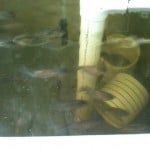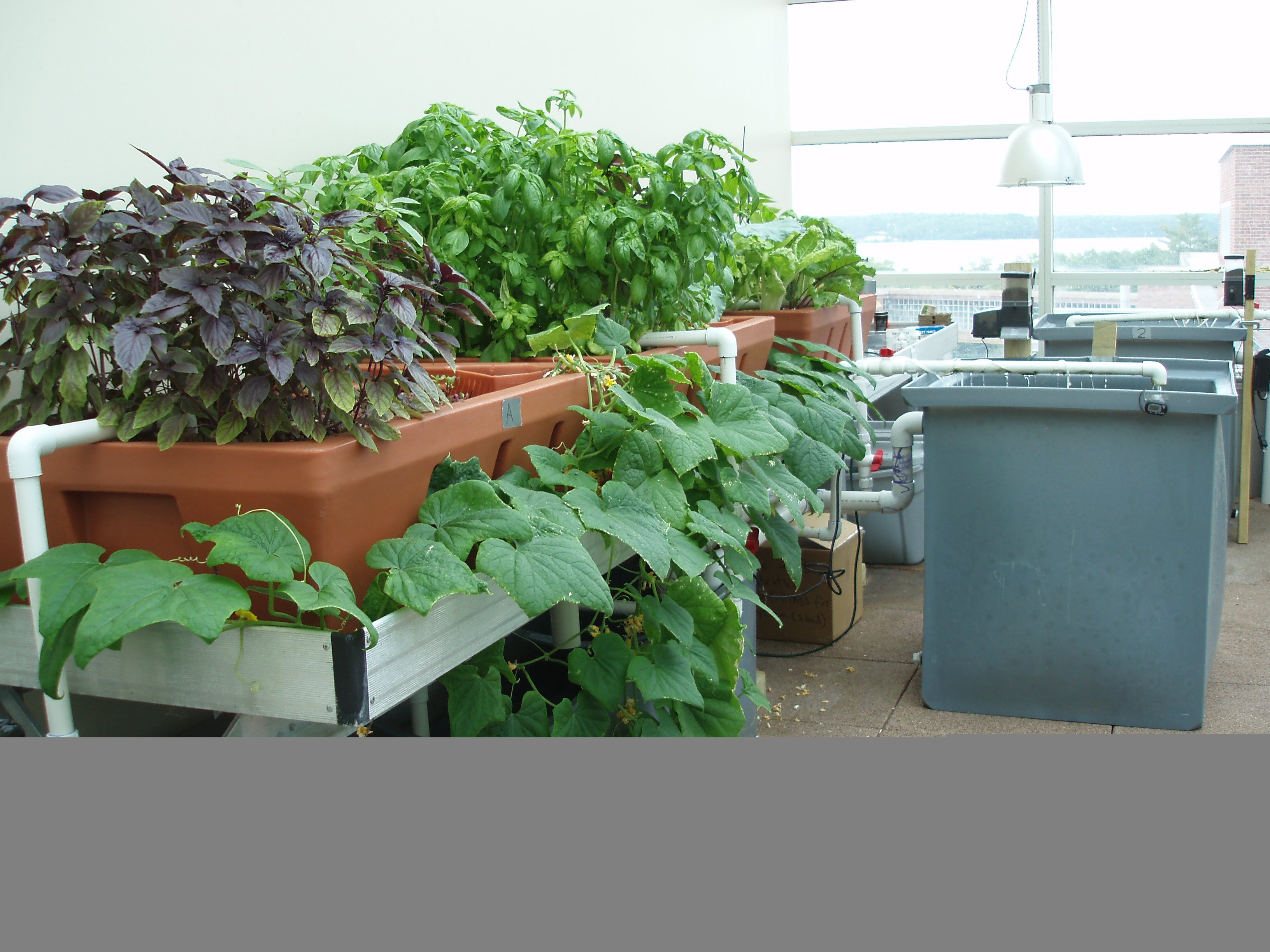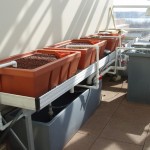Michigan Tech has launched itself into the urban ag movement with an aquaponics set-up in the ninth floor greenhouse in the Dow. Established by Robert Handler (in the Sustainable Futures Institute) and Nancy Auer (Biological Sciences), the farm is producing basil, tomatoes, peppers, eggplants, and more than three dozen tilapia (in the large blue bins with the mesh on top). The water from the fish bins (filled with fish poop) circulates to the planted containers, where the plants use the fish fertilizer to grow. The water trickles through the soil, leaving through the bottom as clean water that is then circulated back into the fish tanks. Given the great success of its inaugural year, I can envision a steady flow of fresh, local veggies and fish appearing in the campus dining halls in the near future.
Prof. Nancy Auer and Dr. Robert Handler discussing the aquaponics system at Michigan Tech



